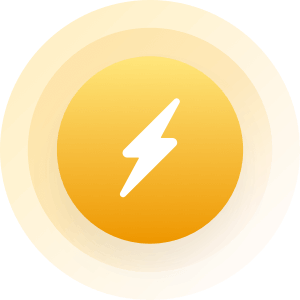| Topic: Perseid Meteor Shower | |
|---|---|
|
Dazzling perseid meteor shower The annual Perseid shower could send up to 200 meteors per hour streaking across the sky. The night sky will sparkle with "falling stars" … The annual Perseid meteor shower is expected to put on a good show this week for those willing to get up in the wee hours of the morning and wait patiently for the shooting stars. In North America, the best time to watch will be between midnight to 5 a.m. on Wednesday, Aug. 12, but late Tuesday night and also Wednesday night could prove fruitful, weather permitting. The Perseids are always reliable, and sometimes rather spectacular. The only things that puts a damper on the August show are bad weather or bright moonlight. Unfortunately this week, as the Perseids reach their peak Tuesday and Wednesday nights, the moon will be high in the sky, outshining the fainter meteors. Still, skywatchers around the globe will have a good chance of spotting the brighter meteors. Some already are enjoying the show. The Perseids are bits of debris from Comet Swift-Tuttle, which has laid down several streams of debris, each in a slightly different location, over the centuries as it orbits the sun. Every August, Earth passes through these debris streams, which spread out over time. "They are typically fast, bright and occasionally leave persistent trains," says Joe Rao, SPACE.com's Skywatching Columnist. "And every once in a while, a Perseid fireball will blaze forth, bright enough to be quite spectacular and more than capable to attract attention even in bright moonlight." Low numbers of Perseids, including some bright fireballs, have already been reported as Earth began entering the stream in late July. Seasoned observers have counted up to 25 per hour already, or nearly one every two minutes. Most meteors are no bigger than a pea. They vaporize as they enter Earth's atmosphere, creating bright streaks across the sky. The Perseids appear to emanate from the constellation Perseus, which rises high in the sky around midnight and is nearly overhead by dawn. Like most meteor showers, the hours between midnight and daybreak are typically the best time to watch, because that's when the side of Earth you are on is rotating into the direction of Earth's travels through space, so meteors are "scooped up" by the atmosphere at higher rates, much like a car's windshield ends the lives of more bugs than does the rear bumper. Astronomers expect up to 200 meteors per hour in short bursts of up to 15 minutes or so. But many of the fainter meteors will simply not be visible due to moonlight, and rates will go down even more for those in urban areas. More likely a typical observer under reasonably dark skies might hope to see a meteor every couple minutes when the bursts come, and fewer during lulls. When to watch The best time to watch is between midnight and dawn Wednesday. Forecasters say the best stretch could come between 4 a.m. and 5 a.m. ET (1-2 a.m. PT), which would be after daybreak in Europe. Some Perseids might be visible late Tuesday night, and Wednesday night into Thursday morning could prove worthwhile, too. Meteor forecasting is still in its infancy, however, so the best bet for anyone truly hungry to spot shooting stars is to get in as much observing time as possible from around 11 p.m. Tuesday night until dawn Wednesday, and if you miss that show, try the same time frame Wednesday evening into Thursday morning. Meteors should be visible in the pre-dawn hours, weather permitting, all around the Northern Hemisphere. "Earth passes through the densest part of the debris stream sometime on Aug. 12," said Bill Cooke of NASA's Meteoroid Environment Office. "Then, you could see dozens of meteors per hour." Viewing tips The best location is far from city and suburban lights. Ideally, find a structure, mountain or tree to block the moon. Then scan as much of the sky as possible. The meteors can appear anywhere, heading in any direction. If you trace their paths backward, they'll all point to the constellation Perseus. People in locations where any chill might occur should dress warmer than they think necessary to allow for prolonged viewing. Seasoned skywatchers advise using a blanket or lounge chair for comfort, so you can lie back and look up for long periods. Allow at least 15 minutes for your eyes to fully adjust to the darkness. Then expect meteors to be sporadic: You might see two in a row, or several minutes could go by between shooting stars. Avid meteor watchers might want to try scanning the northeastern horizon from 9 p.m. to 11 p.m. local time (your local time, wherever you are) for Perseids that graze the horizon. "Earthgrazers are meteors that approach from the horizon and skim the atmosphere overhead like a stone skipping across the surface of a pond," Cooke explained. "They are long, slow and colorful – among the most beautiful of meteors." He notes that an hour of watching may net only a few of these at most, but seeing even one can make the whole night worthwhile. For Northern Hemisphere observers, August is usually regarded as "meteor month," with one of the best displays of the year reaching its peak near midmonth. That display is, of course, the annual Perseid Meteor Shower, beloved by everyone from meteor enthusiasts to summer campers. This year is expected to produce an above average number of "shooting stars" that could offer a rewarding experience to skywatchers around the globe. There's just one problem: A bright moon will drown out fainter meteors. The moon will be at last quarter the night of Aug. 13 and it will be at a rather bright waning gibbous phase a night or two earlier, seriously hampering observation of the peak of the Perseids, predicted to occur late on the nights of Aug. 11 and 12. Moonrise on Aug. 11 comes at around 10:20 p.m., while on Aug. 12 it's around 10:50 p.m. The moon will be hovering below and to the left of the Great Square of Pegasus these nights and not all that far from the constellation Perseus, from where the meteors will appear to emanate (hence the name "Perseid"). Perseus, does not begin to climb high up into the northeast sky until around midnight; by dawn it's nearly overhead. But bright moonlight will flood the sky through most of those two key nights and will certainly play havoc with any serious attempts to observe these meteors. Shower already underway The Perseids are already around, having been active only in a very weak and scattered form since around July 17, as is typically the case for this annual shower. But a noticeable upswing in Perseid activity traditionally begins during the second week of August, leading up to their peak. They are typically fast, bright and occasionally leave persistent trains. And every once in a while, a Perseid fireball will blaze forth, bright enough to be quite spectacular and more than capable to attract attention even in bright moonlight. Unfortunately, because the moon was also at full phase on Aug. 5 it will always be above the horizon during the predawn morning hours (when Perseid viewing is best) in the days leading up to the peak. So even the gradual increase in the shower will be spoiled by moonlight. The moon arrives at last quarter on Aug. 13 and thereafter its light becomes much less objectionable, but by that time the peak of the display has passed, leaving only a few lingering Perseid stragglers in its wake. But nonetheless, the 2009 Perseids will be still be worth watching. Comet crumbs We know today that these meteors are actually the dross of the Swift-Tuttle comet. Discovered back in 1862, this comet takes approximately 130 years to circle the sun. And in much the same way that the Tempel-Tuttle comet leaves a trail of debris along its orbit to produce the spectacular Leonid Meteors of November, the Swift-Tuttle comet produces a similar debris trail along its orbit to cause the Perseids. Indeed, every year during mid-August, when the Earth passes close to the orbit of Swift-Tuttle, the material left behind by the comet from its previous visits, ram into our atmosphere at approximately 37 miles (60 kilometers) per second and create bright streaks of light in our midsummer night skies. And according to two meteor researchers, each working independently, 2009 could turn out to be an unusually intense Perseid year. Mikhail Maslov of Russia has determined that within a matter of several hours on the morning of Aug. 12, the Earth will come close to three trails of dust shed by the Swift-Tuttle comet from three prior visits to the vicinity of the Sun (in 1610, 1737 and 1861). All three encounters will all occur within a roughly 4-hour time frame between 4 and 8 hours UT, which will be particularly favorable for eastern North America where this interval corresponds to midnight to 4 a.m. on Aug. 12; the constellation of Perseus will be gradually climbing the northeast sky during this time frame. According to Maslov, the Earth will be passing only 87,000 miles (140,000 km) from the center of the 1610 trail at 8:07 UT (4:07 a.m. EDT). In the absence of moonlight, an observer might see up to 200 meteors per hour around that time, a number that sadly – because of the bright moon – won't in 2009. Overall, though, the Perseids might still put on a good display despite the interfering moonlight, with at least the brighter meteors being visible to patient observers. Another researcher, Jeremie Vaubaillon of Caltech, used a computer simulation to depict Earth's passage through the Perseids in 2009. Vaubaillon's simulation clearly shows Earth encountering significant meteor activity from about 0 hours UT on Aug. 12 through about 6 hours UT on Aug. 13, possibly suggesting better than average Perseid activity worldwide for both the late-night hours of Aug. 11 and Aug. 12, local times. Is it safe? Many years ago, a phone call came into New York's Hayden Planetarium. The caller sounded very concerned after hearing a radio announcement of an upcoming Perseid display and wanted to know if it would be dangerous to stay outdoors on the peak night of the shower (perhaps assuming there was a danger of getting hit by cosmic debris). These meteoroids, however, are no bigger than sand grains or pebbles, have the consistency of cigar ash and are consumed dozens of miles above our heads. The caller was passed along to the Planetarium's then-Chief Astronomer, Dr. Kenneth L. Franklin (1923-2007). Franklin quickly allayed any fears by cheerfully commenting that there are only two dangers from watching for Perseid meteors: getting drenched with dew and falling asleep! |
|
|
|
|
 I wonder if I will be able to see them. I wonder if I will be able to see them.
|
|
|
|
|
 I wonder if I will be able to see them. I wonder if I will be able to see them. Why wouldn't you..where are you? |
|
|
|
|
 I wonder if I will be able to see them. I wonder if I will be able to see them. Why wouldn't you..where are you? South Carolina...but the forecast is calling for rain. I may see it depending on how clear the sky is. |
|
|
|
|
 I wonder if I will be able to see them. I wonder if I will be able to see them. Why wouldn't you..where are you? South Carolina...but the forecast is calling for rain. I may see it depending on how clear the sky is. well, as long as it not too cloudy. Hope ya get to see it.. pretty awesome 
|
|
|
|
|
|
Well its nice and clear here tonight loads off stars half moon
|
|
|
|
|
|
Edited by
noblenan
on
Tue 08/11/09 07:43 PM
|
|
|
I read that this time next week should be the best. I would love to drive up to the Oklahoma Panhandle and watch. Absolutely no light obstructions there.
  Oops, next week is this week! Wow, have I lost track of time!!! 
|
|
|
|
|
|
Just in case you need to know how cloudy it is, the ADDS website will show you the sat and radar views of the clouds in your area ... actually all areas. If you want exact weather information other than the "click on my area view" you have to input an airport code. Dallas is Kdfw, Houston is khou, etc.
This is actually the most complete weather website in existence, but some of the features are a little hard to use unless you are a pilot. |
|
|
|
|
|
Dazzling perseid meteor shower The annual Perseid shower could send up to 200 meteors per hour streaking across the sky. The night sky will sparkle with "falling stars" … The annual Perseid meteor shower is expected to put on a good show this week for those willing to get up in the wee hours of the morning and wait patiently for the shooting stars. In North America, the best time to watch will be between midnight to 5 a.m. on Wednesday, Aug. 12, but late Tuesday night and also Wednesday night could prove fruitful, weather permitting. The Perseids are always reliable, and sometimes rather spectacular. The only things that puts a damper on the August show are bad weather or bright moonlight. Unfortunately this week, as the Perseids reach their peak Tuesday and Wednesday nights, the moon will be high in the sky, outshining the fainter meteors. Still, skywatchers around the globe will have a good chance of spotting the brighter meteors. Some already are enjoying the show. The Perseids are bits of debris from Comet Swift-Tuttle, which has laid down several streams of debris, each in a slightly different location, over the centuries as it orbits the sun. Every August, Earth passes through these debris streams, which spread out over time. "They are typically fast, bright and occasionally leave persistent trains," says Joe Rao, SPACE.com's Skywatching Columnist. "And every once in a while, a Perseid fireball will blaze forth, bright enough to be quite spectacular and more than capable to attract attention even in bright moonlight." Low numbers of Perseids, including some bright fireballs, have already been reported as Earth began entering the stream in late July. Seasoned observers have counted up to 25 per hour already, or nearly one every two minutes. Most meteors are no bigger than a pea. They vaporize as they enter Earth's atmosphere, creating bright streaks across the sky. The Perseids appear to emanate from the constellation Perseus, which rises high in the sky around midnight and is nearly overhead by dawn. Like most meteor showers, the hours between midnight and daybreak are typically the best time to watch, because that's when the side of Earth you are on is rotating into the direction of Earth's travels through space, so meteors are "scooped up" by the atmosphere at higher rates, much like a car's windshield ends the lives of more bugs than does the rear bumper. Astronomers expect up to 200 meteors per hour in short bursts of up to 15 minutes or so. But many of the fainter meteors will simply not be visible due to moonlight, and rates will go down even more for those in urban areas. More likely a typical observer under reasonably dark skies might hope to see a meteor every couple minutes when the bursts come, and fewer during lulls. When to watch The best time to watch is between midnight and dawn Wednesday. Forecasters say the best stretch could come between 4 a.m. and 5 a.m. ET (1-2 a.m. PT), which would be after daybreak in Europe. Some Perseids might be visible late Tuesday night, and Wednesday night into Thursday morning could prove worthwhile, too. Meteor forecasting is still in its infancy, however, so the best bet for anyone truly hungry to spot shooting stars is to get in as much observing time as possible from around 11 p.m. Tuesday night until dawn Wednesday, and if you miss that show, try the same time frame Wednesday evening into Thursday morning. Meteors should be visible in the pre-dawn hours, weather permitting, all around the Northern Hemisphere. "Earth passes through the densest part of the debris stream sometime on Aug. 12," said Bill Cooke of NASA's Meteoroid Environment Office. "Then, you could see dozens of meteors per hour." Viewing tips The best location is far from city and suburban lights. Ideally, find a structure, mountain or tree to block the moon. Then scan as much of the sky as possible. The meteors can appear anywhere, heading in any direction. If you trace their paths backward, they'll all point to the constellation Perseus. People in locations where any chill might occur should dress warmer than they think necessary to allow for prolonged viewing. Seasoned skywatchers advise using a blanket or lounge chair for comfort, so you can lie back and look up for long periods. Allow at least 15 minutes for your eyes to fully adjust to the darkness. Then expect meteors to be sporadic: You might see two in a row, or several minutes could go by between shooting stars. Avid meteor watchers might want to try scanning the northeastern horizon from 9 p.m. to 11 p.m. local time (your local time, wherever you are) for Perseids that graze the horizon. "Earthgrazers are meteors that approach from the horizon and skim the atmosphere overhead like a stone skipping across the surface of a pond," Cooke explained. "They are long, slow and colorful – among the most beautiful of meteors." He notes that an hour of watching may net only a few of these at most, but seeing even one can make the whole night worthwhile. For Northern Hemisphere observers, August is usually regarded as "meteor month," with one of the best displays of the year reaching its peak near midmonth. That display is, of course, the annual Perseid Meteor Shower, beloved by everyone from meteor enthusiasts to summer campers. This year is expected to produce an above average number of "shooting stars" that could offer a rewarding experience to skywatchers around the globe. There's just one problem: A bright moon will drown out fainter meteors. The moon will be at last quarter the night of Aug. 13 and it will be at a rather bright waning gibbous phase a night or two earlier, seriously hampering observation of the peak of the Perseids, predicted to occur late on the nights of Aug. 11 and 12. Moonrise on Aug. 11 comes at around 10:20 p.m., while on Aug. 12 it's around 10:50 p.m. The moon will be hovering below and to the left of the Great Square of Pegasus these nights and not all that far from the constellation Perseus, from where the meteors will appear to emanate (hence the name "Perseid"). Perseus, does not begin to climb high up into the northeast sky until around midnight; by dawn it's nearly overhead. But bright moonlight will flood the sky through most of those two key nights and will certainly play havoc with any serious attempts to observe these meteors. Shower already underway The Perseids are already around, having been active only in a very weak and scattered form since around July 17, as is typically the case for this annual shower. But a noticeable upswing in Perseid activity traditionally begins during the second week of August, leading up to their peak. They are typically fast, bright and occasionally leave persistent trains. And every once in a while, a Perseid fireball will blaze forth, bright enough to be quite spectacular and more than capable to attract attention even in bright moonlight. Unfortunately, because the moon was also at full phase on Aug. 5 it will always be above the horizon during the predawn morning hours (when Perseid viewing is best) in the days leading up to the peak. So even the gradual increase in the shower will be spoiled by moonlight. The moon arrives at last quarter on Aug. 13 and thereafter its light becomes much less objectionable, but by that time the peak of the display has passed, leaving only a few lingering Perseid stragglers in its wake. But nonetheless, the 2009 Perseids will be still be worth watching. Comet crumbs We know today that these meteors are actually the dross of the Swift-Tuttle comet. Discovered back in 1862, this comet takes approximately 130 years to circle the sun. And in much the same way that the Tempel-Tuttle comet leaves a trail of debris along its orbit to produce the spectacular Leonid Meteors of November, the Swift-Tuttle comet produces a similar debris trail along its orbit to cause the Perseids. Indeed, every year during mid-August, when the Earth passes close to the orbit of Swift-Tuttle, the material left behind by the comet from its previous visits, ram into our atmosphere at approximately 37 miles (60 kilometers) per second and create bright streaks of light in our midsummer night skies. And according to two meteor researchers, each working independently, 2009 could turn out to be an unusually intense Perseid year. Mikhail Maslov of Russia has determined that within a matter of several hours on the morning of Aug. 12, the Earth will come close to three trails of dust shed by the Swift-Tuttle comet from three prior visits to the vicinity of the Sun (in 1610, 1737 and 1861). All three encounters will all occur within a roughly 4-hour time frame between 4 and 8 hours UT, which will be particularly favorable for eastern North America where this interval corresponds to midnight to 4 a.m. on Aug. 12; the constellation of Perseus will be gradually climbing the northeast sky during this time frame. According to Maslov, the Earth will be passing only 87,000 miles (140,000 km) from the center of the 1610 trail at 8:07 UT (4:07 a.m. EDT). In the absence of moonlight, an observer might see up to 200 meteors per hour around that time, a number that sadly – because of the bright moon – won't in 2009. Overall, though, the Perseids might still put on a good display despite the interfering moonlight, with at least the brighter meteors being visible to patient observers. Another researcher, Jeremie Vaubaillon of Caltech, used a computer simulation to depict Earth's passage through the Perseids in 2009. Vaubaillon's simulation clearly shows Earth encountering significant meteor activity from about 0 hours UT on Aug. 12 through about 6 hours UT on Aug. 13, possibly suggesting better than average Perseid activity worldwide for both the late-night hours of Aug. 11 and Aug. 12, local times. Is it safe? Many years ago, a phone call came into New York's Hayden Planetarium. The caller sounded very concerned after hearing a radio announcement of an upcoming Perseid display and wanted to know if it would be dangerous to stay outdoors on the peak night of the shower (perhaps assuming there was a danger of getting hit by cosmic debris). These meteoroids, however, are no bigger than sand grains or pebbles, have the consistency of cigar ash and are consumed dozens of miles above our heads. The caller was passed along to the Planetarium's then-Chief Astronomer, Dr. Kenneth L. Franklin (1923-2007). Franklin quickly allayed any fears by cheerfully commenting that there are only two dangers from watching for Perseid meteors: getting drenched with dew and falling asleep! 
|
|
|
|
|
|
I was out last night and saw, along with a dozen or more smaller ones, the most amazing "shooting star" I have ever seen. It cover fully 90 degrees of arc, was several times brighter that Venus and I could actually see a red/orange tinted bulbous "head". Beautiful!
|
|
|
|
|
|
ye, it was very cool. We were counting them as we saw.. we counted 15 the first hour and 13 the second hour, then we got cold and came down off the mountain.. well worth seeing.
|
|
|
|
|
|
Tonight will be the strongest night to see them. Face East. At least where I live...Preferably in the foothills away from the city lights. Im going to put my SLR to the test:)
|
|
|
|
|













